A small army of citizen scientists cluster at Cape rivers each spring to count fish. Why?
CENTERVILLE — In the early morning, just as the stars are fading out of view and the eastern sky is separating into the layered colors of dawn, Jane Ward makes her way to the edge of Centerville's Long Pond, flashlight in hand.
Here, she trains her attention on the spot where the Centerville River — really a stream — begins to pour down toward the Herring River, which eventually lets out into East Bay at Dowses Beach, and finally into Nantucket Sound. She watches for river herring, at last arriving after untold miles of ocean travel and about a mile of upstream pushing against the current in their instinctual drive to return to the pond of their birth to spawn.
For 10 minutes, she counts the lithe, silvery fish as they pass into the pond, then collects water temperature data and takes note of the weather conditions. Her husband, Steve Waller, has already been out in the darkness of night at least a few times, doing the same thing.
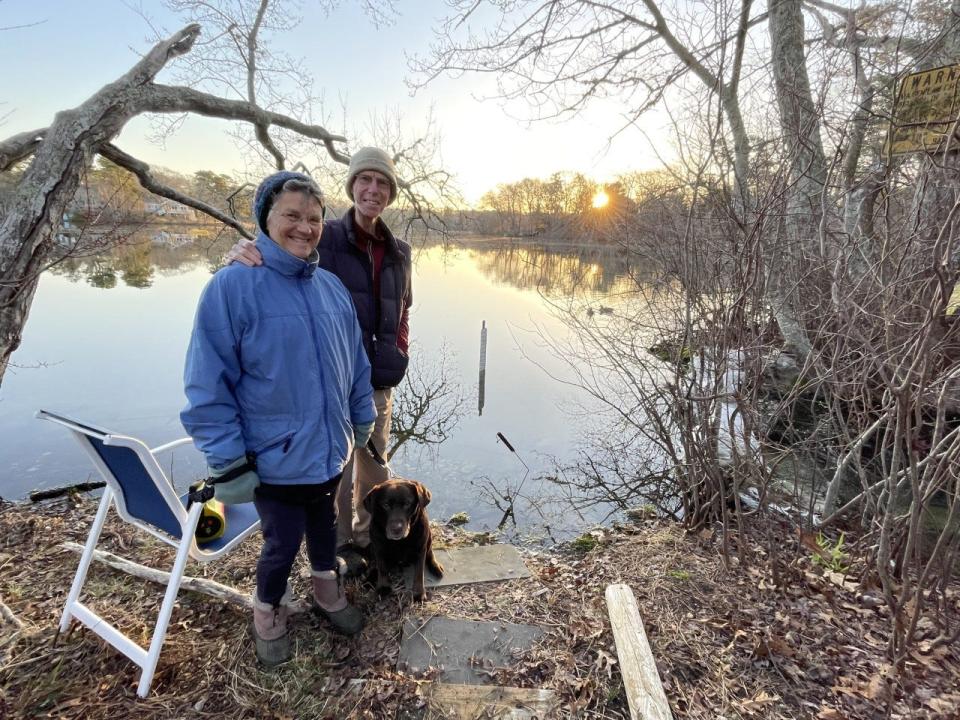
This is the couple's daily routine from April 1 through June 1. They are among a small army of citizen scientist volunteers across the Cape who participate in counting as the herring complete their upstream runs — a sure sign of spring here. For Ward and Waller, the task is as simple as walking out their back door and down the slope to the pond. The herring run flows right along their property.
Usually, they can tell it's around April 1 when they start seeing the herring. On Monday, after two days of no shows from the fish, the couple was excited to begin counting.
"Steve saw 44 earlier," said Ward, joining her husband and their dog, Rosie, at water's edge just as the sun was rising on April 3. "And I just finished a 10-minute watch and saw 13."
Volunteers collect data for the Association to Preserve Cape Cod.
Ward and Waller collect data for the Association to Preserve Cape Cod, one of the organizations that conducts herring counts each year, recruiting volunteers to count at herring runs all over the Cape. Volunteers are asked to count several times each week during the season.
Alewives and bluebacks are the two species in Massachusetts coastal waters collectively known as "river herring," according to the Massachusetts Division of Marine Fisheries; they "are anadromous, meaning they are born in freshwater, spend the majority of their lives in the ocean, and return to freshwater to spawn."
Alewives spawn in late March to mid-May when water temperature is about 51 degrees Fahrenheit, while the bluebacks are usually seen in late April into June, when water temperature reaches about 57 degrees Fahrenheit.
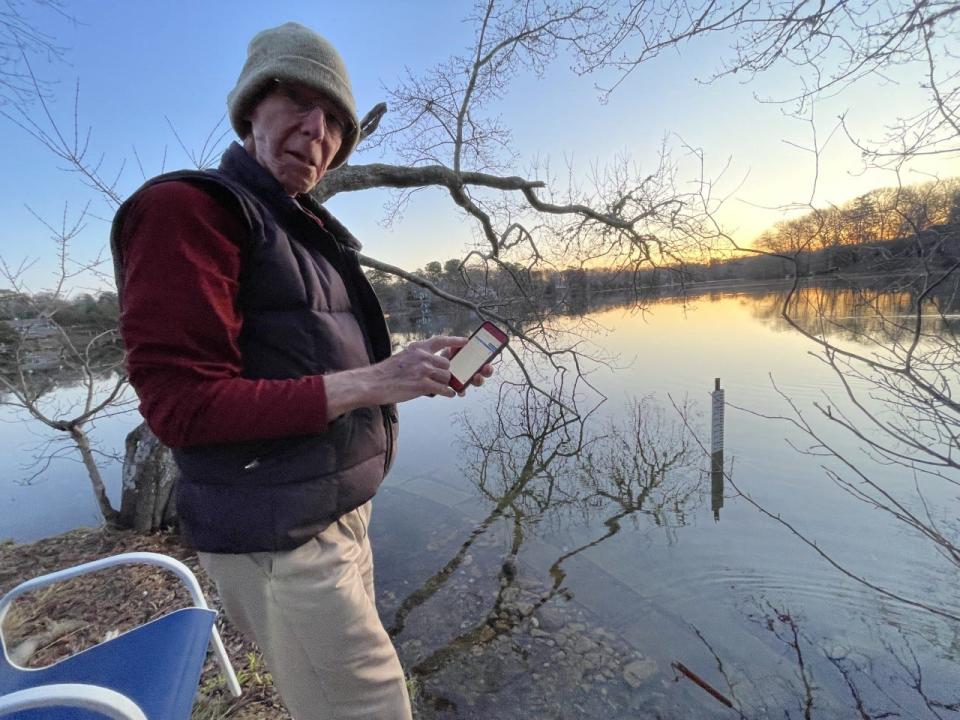
Cape Cod has 41 active herring runs.
Jo Ann Muramoto, regional coordinator for the MassBays Program on Cape Cod and the Association to Preserve Cape Cod director of science programs, said many volunteers are needed to fill counting slots extending from April 1 to June 1, to collect data nine times a day, seven days a week.
Here on the Cape, there are numerous herring runs, and a lot of fish to count.
"Cape Cod has 41 active herring runs, several of which are major runs on a par with runs on the mainland," Muramoto said.
During each observation, monitors spend 10 minutes counting as fish pass by going upstream. They then measure the water temperature and fill out a data sheet with the number of fish they counted, the start and end times of their count, the water temperature, and weather observations.
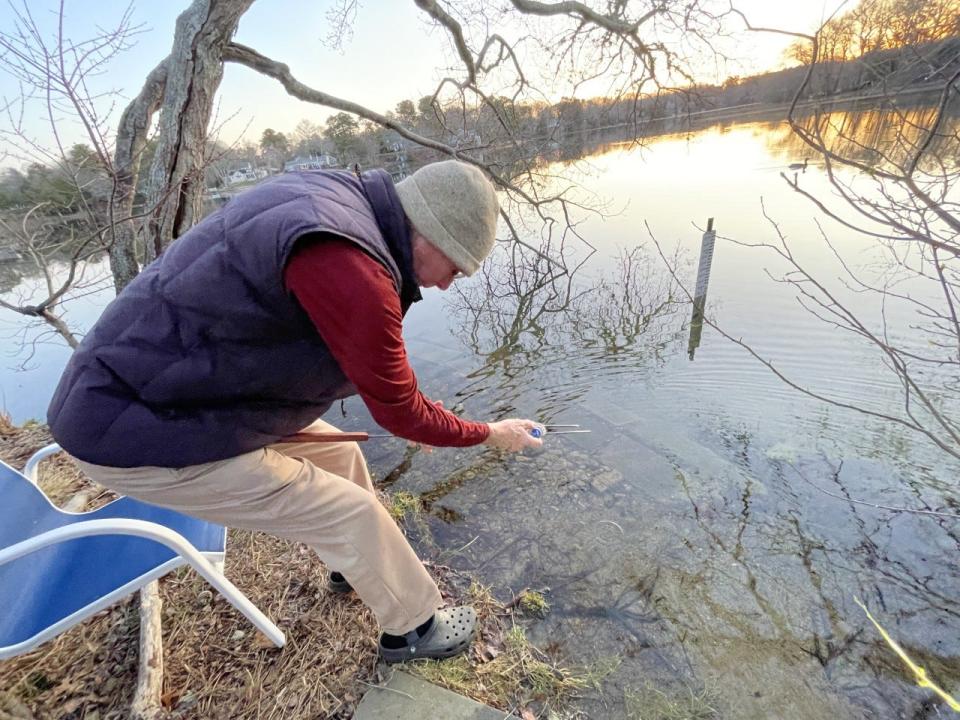
Why is counting herring so important?
"Herring populations help to support the Cape's natural ecosystems because they are so important in the food web," Muramoto said, adding that many species depend on herring for food, including commercially and recreationally important species of fish.
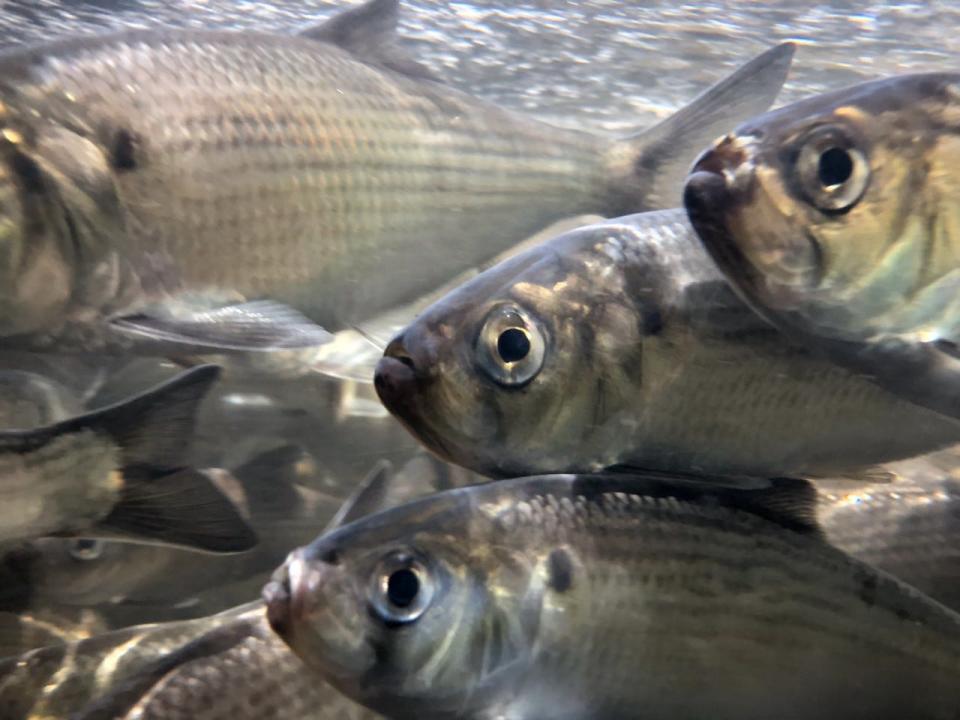
According to Muramoto, river herring have been declining in numbers for years. The fish are also of great importance to the Wampanoag Tribe, she said.
More: Ahead of the spawning season: Aboriginal rights on and off the reservation
"Due to their decline, there has been a ban on catching and fishing for herring since 2006; this applies to all, with the exception of the Wampanoag Tribe, which is allowed to take herring for sustenance," she said.
Counts are used by state and federal fisheries agencies to estimate populations, which allows for better protection and management, Muramoto explained.
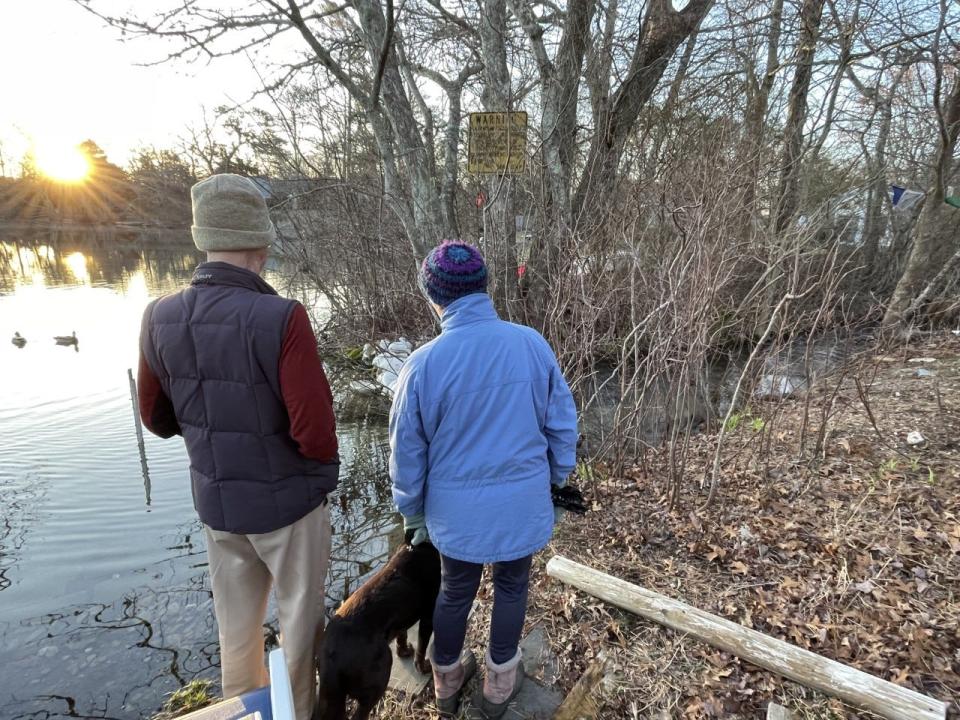
Counting in the dark
Ward and Waller began participating in herring counting after settling in Centerville in 2018, their interest piqued by the efforts of the Association to Preserve Cape Cod.
Most volunteers conduct their counts during the day, but Ward and Waller were authorized to include night counts in their data, too. That's because, for some reason, the herring tend to come up their river in the dark. Night counts are done on Falmouth's Coonamessett River, as well, they said.
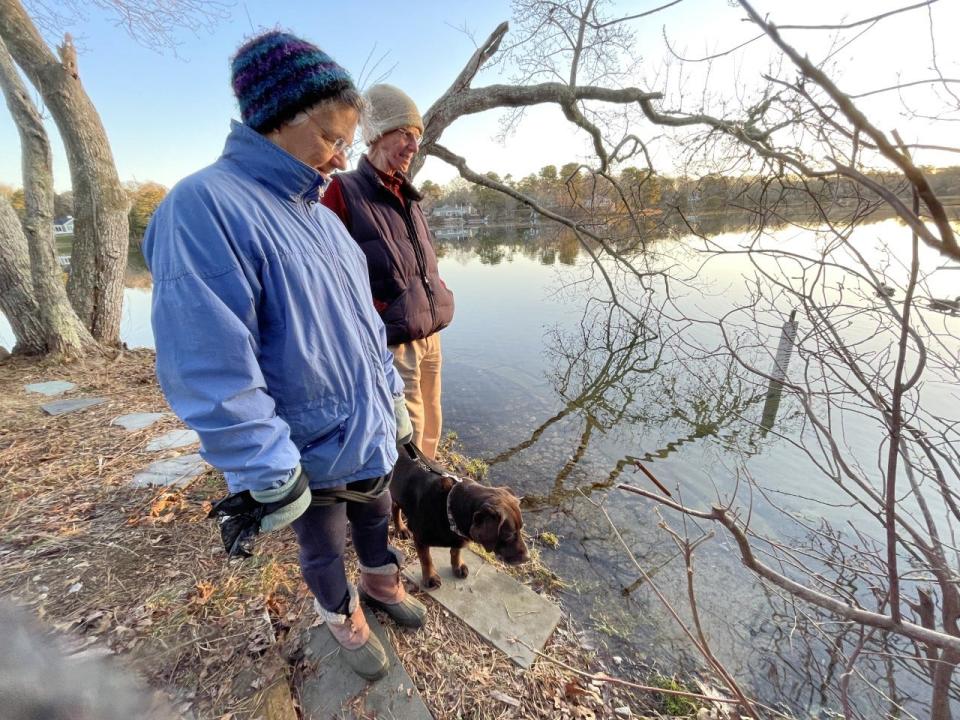
"We have found that 90% of our herring come up between midnight and dawn," said Waller, noting he and Ward had the highest counts on the Cape two years ago, and the second highest last year.
Once the fish arrive, many begin spawning all around Long Pond. Some continue to neighboring Wequaquet Lake to do the same.
"You can tell when they're spawning. They'll jump in the air and stir things up," said Ward.
Herring change their biochemistry. 'It would be like us learning to breathe another gas besides oxygen.'
She and Waller said they are constantly amazed by the fish. Ward finds it remarkable that they can change their biochemistry to the extent that they can go from a saltwater environment to a freshwater one.
"It would be like us learning to breathe another gas besides oxygen," she said.
Ward and Waller said they get a lot of satisfaction out of helping count herring. More than flowers and birds, herring are their harbingers of spring.
"Somehow it's just a real connection with a natural cycle," said Ward. "It's amazing how these tiny little animals know to come back here. And there's something really encouraging about watching these little fish make it up stream."
Get the Cape Cod (sports/politics/news alerts) that matters delivered to your inbox. Sign up for our free (sports/politics/news alerts) newsletter.
This article originally appeared on Cape Cod Times: Herring counting, a rite of spring, begins around Cape Cod rivers

